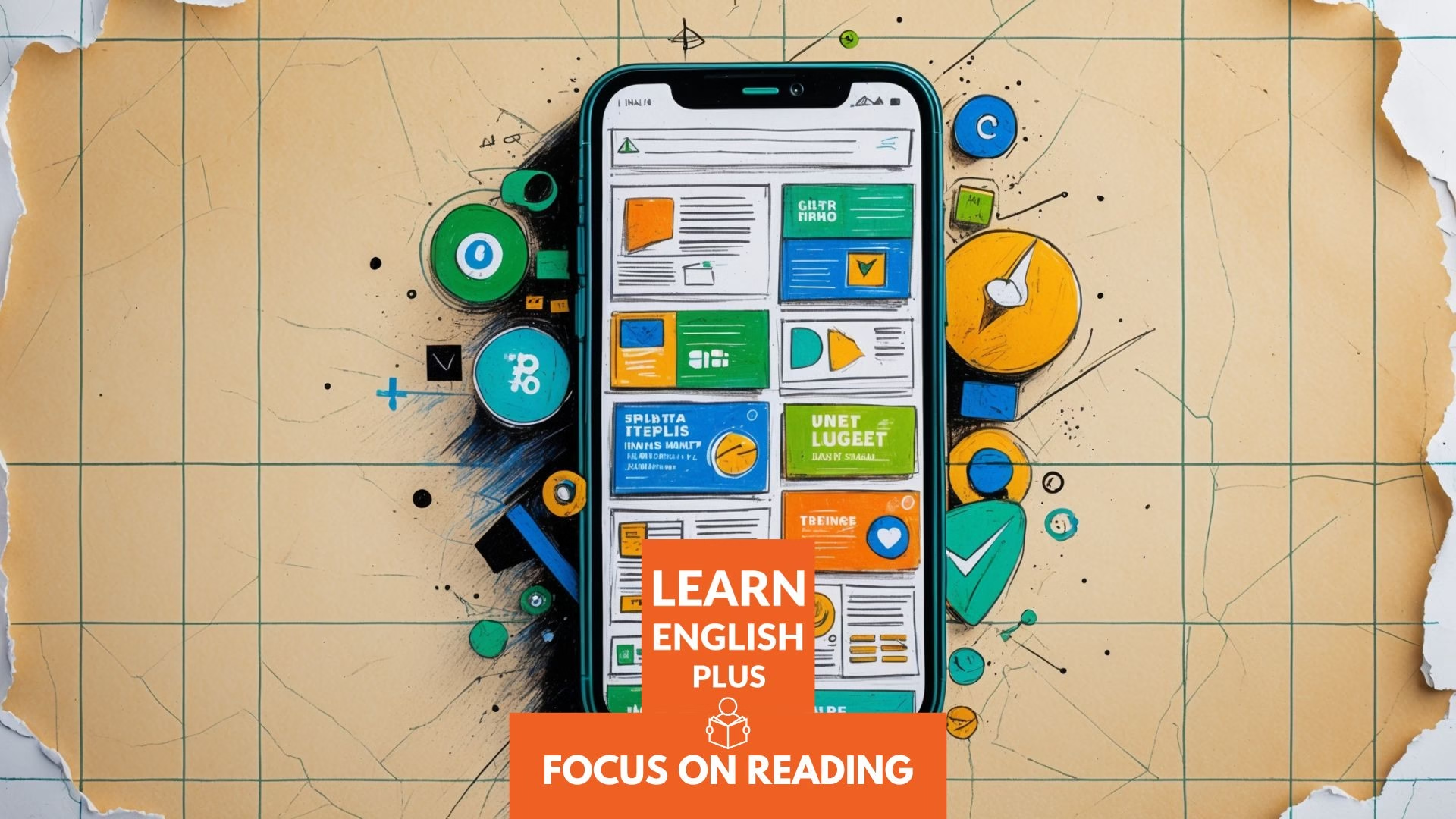Introduction
Welcome back to our Reading Practice Program! Today, we will be examining the dynamic and rapidly changing world of advertising in the digital age. This type of passage is frequently encountered in the reading sections of international exams, testing your ability to understand how technology impacts various aspects of society and business.
To enhance your reading comprehension, keep these strategies in mind:
- Identify the Main Argument: What is the author’s central point about advertising in the digital world?
- Pay Attention to Examples: Note the specific examples used to illustrate the concepts being discussed.
- Understand the Comparisons and Contrasts: Does the passage compare traditional advertising with digital advertising?
- Look for Cause and Effect Relationships: How has the digital world caused changes in advertising practices?
- Consider the Implications: What are the broader consequences of these changes in advertising?
We suggest you take approximately 15-20 minutes to read the passage and answer the following 10 questions. Practicing within a time limit will help you prepare for the time constraints of your exams. Let’s begin!
Reading Passage | Advertising in the Digital World
The advent of the digital world has irrevocably transformed the landscape of advertising. Gone are the days when billboards, print ads, and television commercials held undisputed sway over consumer attention. Today, advertisers navigate a complex ecosystem of online platforms, social media, search engines, and mobile applications to reach their target audiences. This paradigm shift has not only altered the methods by which companies communicate with consumers but has also fundamentally changed the nature of advertising itself.
One of the most significant changes is the shift from a one-way, broadcast model to a more interactive and personalized approach. Traditional advertising often involved a company pushing its message out to a broad audience with limited opportunity for direct engagement. In contrast, digital advertising allows for two-way communication, enabling consumers to interact with brands through comments, likes, shares, and direct messages. Furthermore, the vast amounts of data collected online allow advertisers to tailor their messages to specific demographics, interests, and behaviors, resulting in more personalized and potentially more effective campaigns.
The rise of social media platforms has been particularly impactful. These platforms provide advertisers with unprecedented access to vast networks of potential customers and offer sophisticated tools for targeted advertising. Influencer marketing, where brands collaborate with individuals who have a significant following on social media, has emerged as a powerful strategy. This approach leverages the trust and credibility that influencers have built with their audience to promote products and services.
Search engine marketing is another cornerstone of digital advertising. Platforms like Google allow businesses to pay for their websites to appear prominently in search results when users search for relevant keywords. This ensures that advertisements are shown to individuals who are actively seeking information about specific products or services, increasing the likelihood of conversion.
Mobile advertising has also become increasingly crucial as smartphones have become ubiquitous. Advertisers can reach consumers through mobile apps, in-app advertisements, and location-based marketing. The ability to reach consumers on the go and at various touchpoints throughout their day offers unique opportunities for engagement.
However, the digital advertising landscape is not without its challenges. Ad blockers, which prevent advertisements from being displayed, have become increasingly popular among internet users concerned about intrusive advertising and data privacy. Furthermore, the sheer volume of online advertising can lead to banner blindness, where consumers become desensitized to online ads and tend to ignore them.
Moreover, ethical considerations surrounding data privacy and the use of personal information in advertising are constantly evolving. Regulations like GDPR (General Data Protection Regulation) in Europe reflect growing public concern about how personal data is collected and used by advertisers.
Despite these challenges, digital advertising continues to grow and evolve at a rapid pace. Innovations like programmatic advertising, which uses algorithms to automate the buying and selling of ad space, are constantly changing the way campaigns are executed. The integration of artificial intelligence (AI) and machine learning is also enabling more sophisticated targeting and personalization.
In conclusion, advertising in the digital world represents a significant departure from traditional methods. It offers unprecedented opportunities for personalization, engagement, and measurement but also presents new challenges related to consumer attention, data privacy, and ethical considerations. As technology continues to advance, the landscape of digital advertising will undoubtedly continue to evolve, requiring advertisers to be adaptable and innovative in their strategies.
Glossary
- Advent: The arrival of a notable person, thing, or event. Usage in the reading: “The advent of the digital world has irrevocably transformed…”
- Irrevocably: In a way that cannot be changed, reversed, or recovered. Usage in the reading: “The advent of the digital world has irrevocably transformed the landscape of advertising.”
- Undisputed sway: Unchallenged power or dominance. Usage in the reading: “…billboards, print ads, and television commercials held undisputed sway over consumer attention.”
- Navigate a complex ecosystem: To find one’s way through a complicated network or system. Usage in the reading: “Today, advertisers navigate a complex ecosystem of online platforms…”
- Paradigm shift: A fundamental change in approach or underlying assumptions. Usage in the reading: “This paradigm shift has not only altered the methods…”
- One-way, broadcast model: A method of communication where a message is sent out to a large audience without direct interaction. Usage in the reading: “Traditional advertising often involved a company pushing its message out to a broad audience with limited opportunity for direct engagement.”
- Two-way communication: A form of communication involving an active exchange of information between two parties. Usage in the reading: “…digital advertising allows for two-way communication…”
- Tailor their messages: To adapt or customize messages to suit a specific audience. Usage in the reading: “…allow advertisers to tailor their messages to specific demographics…”
- Sophisticated tools: Advanced and complex instruments or methods. Usage in the reading: “…offer sophisticated tools for targeted advertising.”
- Leverages the trust and credibility: Uses the confidence and reliability that someone has built. Usage in the reading: “This approach leverages the trust and credibility that influencers have built…”
- Cornerstone: An essential or fundamental part of something. Usage in the reading: “Search engine marketing is another cornerstone of digital advertising.”
- Prominently: In a noticeable or important way. Usage in the reading: “…pay for their websites to appear prominently in search results…”
- Actively seeking information: Purposefully looking for details or knowledge. Usage in the reading: “…advertisements are shown to individuals who are actively seeking information…”
- Likelihood of conversion: The probability that someone will take a desired action, such as making a purchase. Usage in the reading: “…increasing the likelihood of conversion.”
- Ubiquitous: Present, appearing, or found everywhere. Usage in the reading: “…as smartphones have become ubiquitous.”
- On the go: While traveling or moving around. Usage in the reading: “The ability to reach consumers on the go…”
- Touchpoints: Points of interaction or contact. Usage in the reading: “…and at various touchpoints throughout their day…”
- Ad blockers: Software that prevents advertisements from being displayed on a webpage. Usage in the reading: “Ad blockers, which prevent advertisements from being displayed…”
- Intrusive advertising: Advertising that is perceived as unwelcome or disruptive. Usage in the reading: “…concerned about intrusive advertising and data privacy.”
- Banner blindness: A phenomenon where internet users consciously or unconsciously ignore banner-like information. Usage in the reading: “…can lead to banner blindness, where consumers become desensitized to online ads…”
- Ethical considerations: Moral principles or values that need to be thought about. Usage in the reading: “Moreover, ethical considerations surrounding data privacy…”
- Constantly evolving: Continuously changing and developing. Usage in the reading: “…are constantly evolving.”
- Regulations: Rules or directives made and maintained by an authority. Usage in the reading: “Regulations like GDPR…”
- Programmatic advertising: The automated buying and selling of digital advertising space using software. Usage in the reading: “Innovations like programmatic advertising…”
- Algorithms: A set of rules or instructions that are followed in order to solve a particular problem. Usage in the reading: “…which uses algorithms to automate the buying and selling of ad space…”
- Executed: Carried out or put into effect. Usage in the reading: “…are constantly changing the way campaigns are executed.”
- Integration of artificial intelligence (AI): The process of combining AI into existing systems or technologies. Usage in the reading: “The integration of artificial intelligence (AI) and machine learning…”
- Sophisticated targeting and personalization: Advanced methods of identifying and tailoring messages to specific audiences. Usage in the reading: “…enabling more sophisticated targeting and personalization.”
- Significant departure: A noticeable difference or move away from something. Usage in the reading: “Advertising in the digital world represents a significant departure from traditional methods.”
- Unprecedented opportunities: Chances or possibilities that have never occurred before. Usage in the reading: “It offers unprecedented opportunities for personalization, engagement, and measurement…”
- Ethical considerations: Moral principles or values that need to be thought about. Usage in the reading: “…but also presents new challenges related to consumer attention, data privacy, and ethical considerations.”
- Adaptable and innovative: Able to adjust to new conditions and create new ideas or methods. Usage in the reading: “…requiring advertisers to be adaptable and innovative in their strategies.”










0 Comments